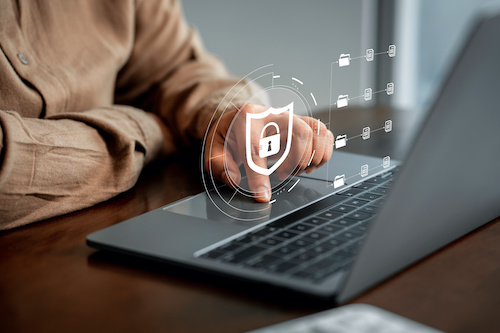Key points:
- Cybersecurity remains a major concern among school IT leaders, and many schools would like these services included in the E-rate program
- Schools and libraries continue to depend on the E-rate funding for internet connections and affordable pricing
- See related article: Will cybersecurity receive E-rate funding?
- For more news on the E-rate, visit eSN’s IT Leadership page
An annual E-rate report reveals a strong consensus among respondents for cybersecurity services to be included in the federal program, considering their critical role in safeguarding educational institutions against cyber threats.
The 13th annual E-rate Trends Report from E-rate compliance services firm Funds For Learning is designed to understand how the program can best serve schools and libraries. School and library input is compiled and delivered directly to the Federal Communications Commission (FCC) to inform program administration.
This year’s survey received 2,110 applicant responses, corresponding to approximately 10 percent of all E-rate applicants. The report demonstrates consistency in applicants’ dependence on E-rate to ensure faster connections, connect more students, and lower prices of goods supported by the program.
Key findings and comments from the 2023 report include:
- E-rate success: E-rate is essential in providing reliable and secure internet connectivity for schools and libraries. Many respondents appreciate the program’s financial support to connect schools and libraries to high-speed internet access, particularly in low-income areas. Out of all of the applicants who completed the survey, 88 percent of participants agreed that their education sites have faster Internet connections due to the E-rate program. Eighty-six percent of educators also feel that their students and library patrons are more connected to the internet than ever.
“E-Rate has been crucial in helping our schools access higher speed internet at an affordable rate.” – Arizona school district
“E-rate is a lifesaver for our tiny, rural library. We would not be able to afford equivalent internet services without it.” – Idaho library
- The need for cybersecurity: The report reveals a strong consensus among respondents for including cybersecurity services in the program. Ninety-three percent of applicants agree that the E-rate program should provide support for comprehensive network security solutions. In December 2022, the Federal Communications Commission issued a Public Notice seeking comments on the potential use of the E-rate program to support next-generation firewalls and other network security services. The response was significant, with hundreds of comments submitted by schools, libraries, service providers, manufacturers, consultants, and industry groups. Commenters expressed well-researched examples of the real-world financial and social impacts of network security breaches, ransomware attacks, and other cybersecurity incidents. They urge the FCC to take action quickly.
“As a member of a Cyber Response Team, I have seen many incidents that have come through that would be solved just by having even basic cybersecurity protections in place, protections that are expensive for school districts to purchase.” – Wisconsin school district
“I would like to reiterate not only the need for cybersecurity funding from the U.S. government for educational organizations as a matter of improved operations, but also as a matter of improved national security.” – Georgia library system
- Equitable access and the learning gap: Internet accessibility is an ongoing concern for students and library patrons. Insufficient internet access in the homes of students or library patrons is a significant issue in the communities of 90 percent of respondents. The report emphasizes the need for equitable access to the internet, especially for off-campus use, to bridge the homework gap and ensure continuity of learning.
“The most important issue we have in our rural area is that there is simply no service available to a large percentage of our students’ households in our community.” – Michigan school district
“This year’s Trends Report highlights the remarkable progress made towards connecting schools and libraries; however, it also emphasizes that our work is far from over,” said Brian Stephens, Director of Stakeholder Engagement of Funds For Learning. “E-rate applicants indicate the need for a proactive approach to safeguarding our students and library patrons. By addressing these challenges head-on, we can pave the way for an even brighter future for education.”
The E-rate program supports nearly every school and library in America, annually providing billions of dollars of much-needed support for Internet access and computer networking. More than 21,300 applicants and 3,800 vendors currently participate in the program.
- Friday 5: Virtual field trips - April 26, 2024
- Google, MIT RAISE launch no-cost AI training course for teachers - April 26, 2024
- 4 ways to support work-based learning - April 23, 2024

